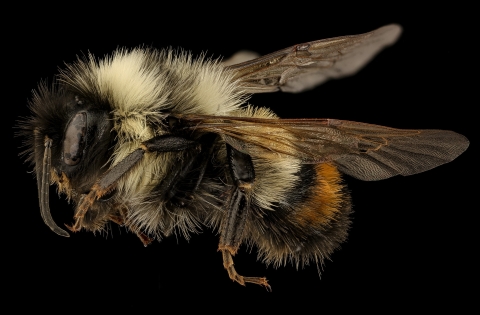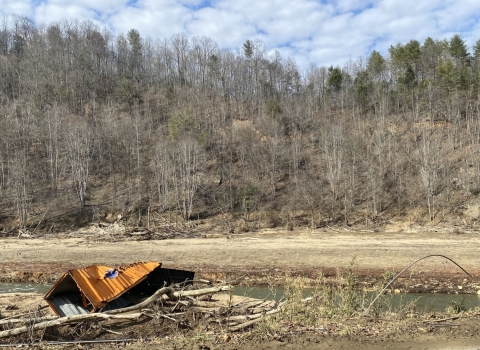Stopping the slide toward extinction and restoring healthy, viable populations is our goal for every species listed under the Endangered Species Act. We at the U.S. Fish and Wildlife Service announce a plan to recover the endangered rusty patched bumble bee to prevent extinction and ensure the long-term future of the bee. The recovery plan for the rusty patched bumble bee focuses on conserving existing populations and addressing threats.
“Saving a species from extinction is a group effort, with partners from national conservation organizations and agencies to local communities and citizens, we can’t do this alone” said Charlie Wooley, regional director for the Great Lakes Region of the U.S. Fish and Wildlife Service. “This is a great opportunity for those who live in the range of the rusty patched bumble bee to get involved in recovery, whether you live in a rural setting or urban areas where we’re finding the species. We encourage everyone to help by learning more about this interesting bee and providing flowers for pollen and nectar. Together we can make sure this important native pollinator doesn’t slip away.”
Recovery planning is one step in a process to address threats to endangered and threatened species. Plans provide a road map for private, tribal, federal and state cooperation in conserving listed species and their ecosystems. While a recovery plan provides guidance on how best to help listed species achieve recovery, it is not a regulatory document. The public is invited to provide input as the plan is developed. Once a recovery plan is finalized, recovery partners outline specific actions in an implementation strategy.
Rusty patched bumblebees are found in small, scattered populations in Illinois, Indiana, Iowa, Maine, Massachusetts, Minnesota, Ohio, Virginia, West Virginia, Wisconsin and Ontario, Canada. Historically, the bee ranged across the eastern and upper Midwest United States. Before it was declared endangered in 2017, the rusty patched bumble bee experienced a widespread and steep decline, with populations plummeting by about 87 percent in the past two decades.
The rusty patched bumble bee was named the state bee of Minnesota in 2019.
The cause of the species’ drastic decline is unknown, but evidence suggests a harmful interaction between a disease-causing pathogen and exposure to pesticides. Other threats to the insect include habitat loss and degradation, competition and disease introduction from managed and non-native bees, small population genetics, and climate change climate change
Climate change includes both global warming driven by human-induced emissions of greenhouse gases and the resulting large-scale shifts in weather patterns. Though there have been previous periods of climatic change, since the mid-20th century humans have had an unprecedented impact on Earth's climate system and caused change on a global scale.
Learn more about climate change .
The rusty patched bumble bee lives in colonies, which are formed by solitary queens emerging from overwintering sites. The species needs nectar and pollen-producing flowers for food, undisturbed nesting habitat near food sources, and suitable overwintering areas to survive.
The final recovery plan for the rusty patched bumble bee includes actions such as land management to improve floral resources and measures to reduce exposure to pesticides and disease-causing pathogens. Raising awareness about the species and engaging private citizens and groups are also key to recovery.
Five things you can do to help the rusty patched bumble bee (and other native bees!)
- Plant your garden with a variety of native flowers that bloom from early spring through fall, providing a food source for bumble bees.
- Consider keeping dandelions around – they’re an important early food source for the rusty patched bumble bee before other flowers are in bloom.
- Be conservative with pesticides – use only when necessary, and only as directed.
- Don’t rake your garden debris in the fall. Rusty patched bumble bee queens overwinter in loose plant matter on the surface of the ground.
- Be on the lookout for nests! Many reports of rusty patched bumble bee nests are from citizens who find them in yards or natural areas.




